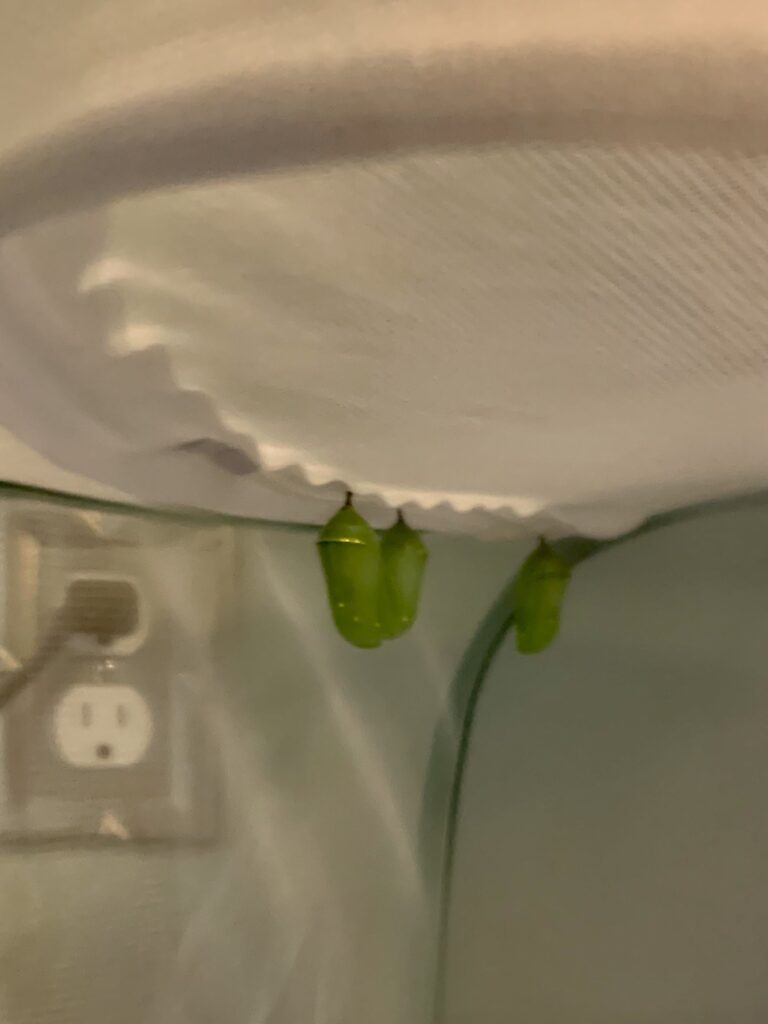One of my favorite things about gardening is that I get to spend a lot of time outdoors. There are times when my husband Paul and I work together on specific projects or areas of the yard, but for the most part I work alone, in my own zone, happy as a clam. I might put some music on my little Bluetooth speaker (classical music is my go-to), but I actually prefer just listening to the birds and the sounds of my neighborhood.
When I returned from my walk earlier this week, I heard a familiar buzzing and found a happy bumble bee visiting our pansies. Spring has definitely arrived. In addition to the bees, the butterflies have made their appearance. I love watching them flit and float around. They are also an important part of any garden environment. Did you know that around one-third of all plants rely on pollination to set their fruit? And butterflies and bees are major pollinators.
Attracting butterflies to your yard is easy. They do require certain plants to lay their eggs on. If you want to have more butterflies visiting, you can research what plants certain species need. Then incorporate them into your home landscape.
Milkweed is the only plant that monarch butterfly caterpillars will eat. About 5 years ago I made a space near our front door and scattered a packet of butterfly weed seeds in the soil. It took awhile, but little plants began to grow. I didn’t really get any blooms that first season, but there were a number of very hardy plants the following year. Not only were there lots of blooms, but the monarch butterflies found us right away. A word of caution – milkweed does spread and can be a challenge to keep under control, so take that into consideration when you are deciding where to scatter those first seeds!
Several years ago, Jackson and Ellis (our grandsons in Queens) were very excited to tell us about their new “pets”. A neighbor of theirs had given them a little pop-up garden habitat cage with 2 monarch butterfly caterpillars and some milkweed cuttings (for them to eat) from her yard. They even named one of them – Twiggy! I had had some experience with this when I was still teaching. We ordered the butterfly kits for the classroom and observed as the painted lady caterpillars went through their stages of development. The idea of finding and feeding your own caterpillars was something entirely new to me. The boys were fascinated as they watched their caterpillars grow, form a chrysalis and emerge as monarch butterflies.
I began to look at my milkweed differently from that moment on. I was so amazed when I found my first monarch caterpillar egg! When I spotted the first caterpillar, I immediately ordered my own pop-up cage. Last summer our granddaughter Hailey found several caterpillars, which we brought inside. We actually had 3 caterpillars in the cage, and our grandchildren were all captivated as they watched the caterpillars transform into butterflies. Hailey even helped us release the butterflies when they were ready.

We’ve also seen beautiful blue tiger swallowtails around our yard. Last summer I decided to plant some fennel in my garden. Towards the end of the season, I noticed some very odd looking caterpillars. They seemed to change in appearance as they grew, and finally reached almost the same size as the monarch caterpillars. When I searched on-line I discovered they were blue swallowtail caterpillars. I had unknowingly established a new habitat for another species of butterfly!
We have butterflies regularly visiting our chive blossoms, coreopsis, lantana, milkweed, zinnias, marigolds, dill, cosmos… I have to confess I did not choose these plants specifically to attract butterflies – it just turned out that way. So as you are deciding what to plant in your garden this year, maybe consider something for the butterflies as well.

